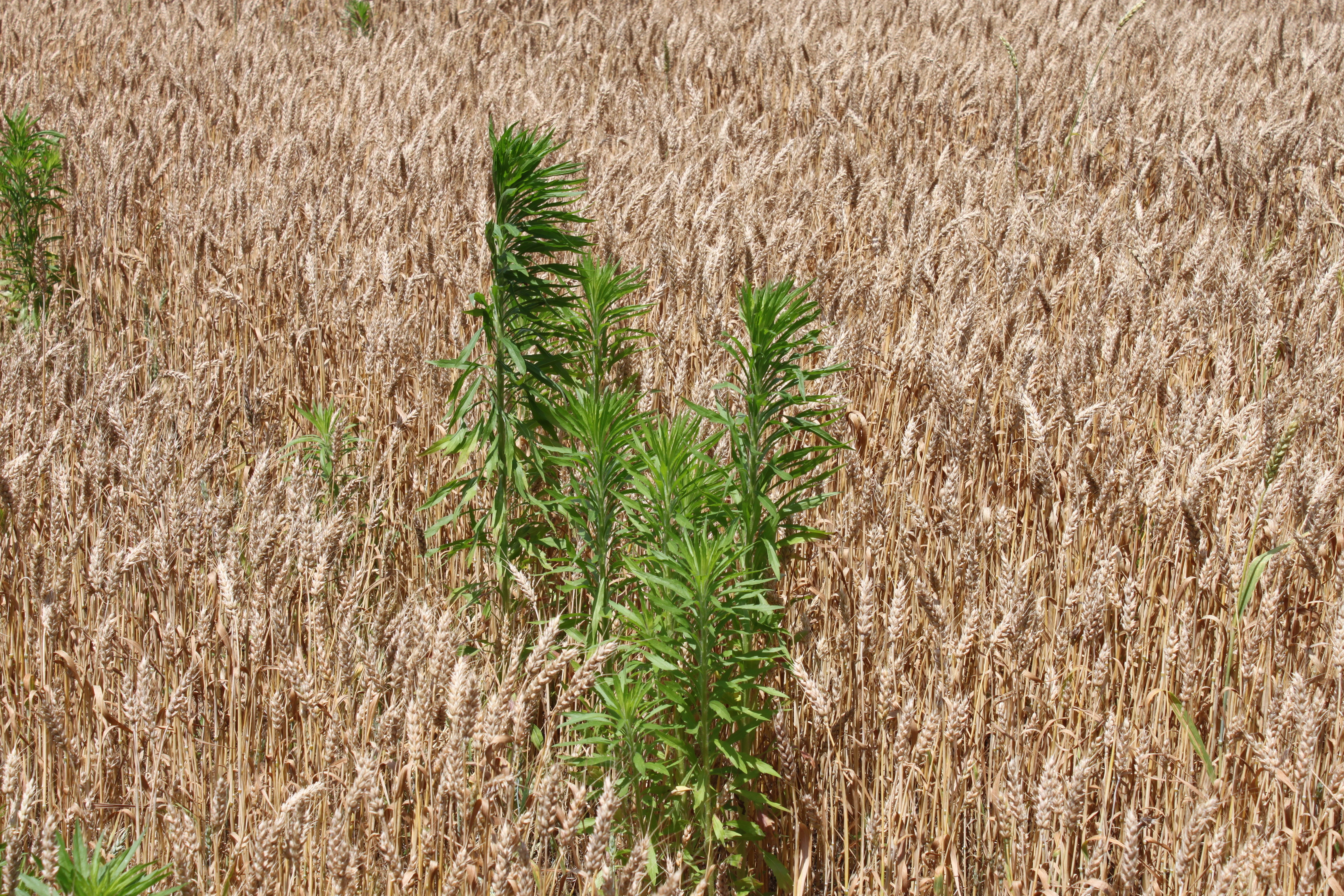Wheat harvest has begun. Remember that soybean yield potential declines with delayed planting date. During the first two weeks of June, this decline is barely noticeable. After mid-June, expect yield to decline about ½ bushel per acre per day. So to minimize soybean yield loss due to late planting, immediately (or as soon as you can) plant. I like to see the combine and the planter or drill in the field at the same time.
Soybean planted after mid-June will not always develop enough leaf area to capture 90-95% of the available sunlight by early pod development (R3). Only if four layers of leaves are formed by that time will yield not be affected. Of course the growing season makes a difference. Last year in many parts of Virginia, even the latest-planted soybean were able to produce enough leaf area. But, on average, June- or July-planted soybean are unable to do so. Therefore it’s important to take actions to minimize this decline.
First, plant as soon as possible. With the recent rains, soil moisture should not be a problem. Even if the soil is dry on top, I suggest to go ahead and plant. You may have to plant a little deeper to hit moisture (don’t plant much deeper than 1.5 inches), but planting depth is not as big of an issue with double-cropped as with full-season soybean.
Second, narrow your row spacing. Narrow rows will produce more leaf area and canopy over faster.
Finally, increase your seeding rates gradually as time goes on. I’m suggesting the following plant populations for Virginia in 2013:
- June 2-8 – 120,000 plants/acre
- June 9-15 – 140,000 plants/acre
- June 16-21 – 160,000 plants/acre
- June 23-29 – 180,000 plants/acre
- June 30-July 5 – 200,000 plants/acre
- After July 5 – 220,000 plants/acre
See the seeding rate chart below to determine the seeds per foot of row needed to obtain a certain number of plants per acre. Note that these seeding rates assume 80% emergence. For different emergence assumptions, divide your desired plant population by the percent emergence that you expect.
|
|
Desired Plant Population |
|||||
|
Row Width |
Early-June Planting Date |
Late-June/Early July Planting Date |
||||
|
120,000 |
140,000 |
160,000 |
180.000 |
200,000 |
220,000 |
|
|
|
(Seed per foot of row assuming 80% emergence) |
|||||
|
20 |
5.7 |
6.7 |
7.7 |
8.6 |
9.6 |
10.5 |
|
18 |
5.2 |
6.0 |
6.9 |
7.7 |
8.6 |
9.5 |
|
15 |
4.3 |
5.0 |
5.7 |
6.5 |
7.2 |
7.9 |
|
10 |
2.9 |
3.3 |
3.8 |
4.3 |
4.8 |
5.3 |
|
7.5 |
2.2 |
2.5 |
2.9 |
3.2 |
3.6 |
3.9 |
|
As planting is delayed, increase seeding rate. Use lower seeding rates on more productive soils. Calculation: Desired Plant Pop. ÷ (43,560 sq. ft./acre ÷ row width in ft.) ÷ % emergence Example: = 180,000 ÷ (43,560 ÷ (15 ÷ 12)) ÷ 0.80 = 6.5 seed per foot of row |
||||||
In addition to planting date, I’ve found that more productive soils will tolerate lower seeding rates, and less productive soils need higher seeding rates; a more productive soil will produce more leaf area than a less productive soil over the same time period.

